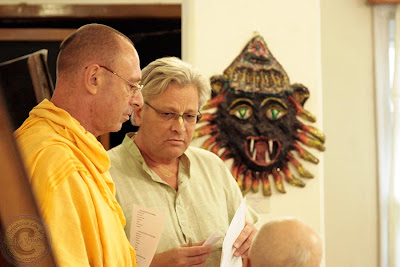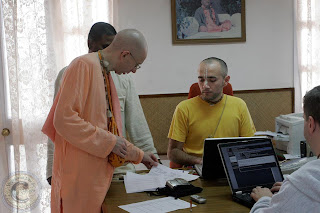Cat at nursing home has talent for predicting death
Curls up to patients who only have a few hours left
DEATH could come in a furrier form than most people imagine.
A hospice cat at a nursing and rehabilitation centre in the US has a talent
for sensing when patients are going to die – and curls up beside them for
their final few hours.
Oscar the cat’s inside knowledge is so reliable, workers have begun alerting
patients’ families when he chooses to settle on their bed, the Associated
Press reported today.
"Many family members take some solace in it," Dr David Dosa of Brown
University told the news agency.
"They seem to appreciate the companionship that the cat provides for their
dying loved one."
Dr Dosa wrote an essay on Oscar’s macabre talents – observed in up to 25
cases at a Rhode Island nursing home – in the New England Journal of
Medicine.
The 2-year-old feline, who was adopted as a kitten, has even received a wall
plaque commending his "compassionate hospice care", AP reported.
When Oscar chooses a patient, it usually means they have only a few hours to
live. # – Prahladananda Swami – 2/8/07
Cannabis harm worse than tobacco
A single cannabis joint could damage the lungs as much as smoking up to five tobacco cigarettes one after another, scientists in New Zealand have said.
The research, published in the journal Thorax, found cannabis damaged the large airways in the lungs causing symptoms such as coughing and wheezing.
It also damaged the ability of the lungs to get oxygen to, and remove waste products from tissues.
Experts say the study confirms that the drug represents a serious health risk.
"This research confirms that cannabis poses a serious health risk to the lungs, and smoking a joint can be more harmful to the lungs than smoking a cigarette"
Dr Keith Prowse
British Lung Foundation
In the study researchers from the Medical Research Institute of New Zealand, Wakefield Hospital and the Wellington School of Medicine and Health Sciences, studied 339 volunteers.
They took CT scans of their lungs and tested their lung function through breathing tests to assess their lung damage.
Participants were divided into four groups – cannabis smokers, combined cannabis and tobacco smokers, tobacco smokers, and non-smokers, and gave them a questionnaire on their smoking habits.
Cannabis smokers were included if they had smoked at least one joint per day for at least five years, while tobacco smokers had to have smoked 20 cigarettes per day for one year.
Cannabis smokers reported symptoms such as wheezing, coughing, chest tightness and excessive phlegm production.
The drug also reduced the numbers of small, fine airways that transport oxygen and waste products to and from blood vessels in the lungs.
And it damaged the function of the large airways of the lungs, obstructing air flow and forcing the lungs to work harder, so contributing to symptoms such as coughing, and the development of bronchitis.
The extent of this large airway damage was directly related to the number of joints smoked – the more joints smoked, the more damage was seen.
However, in this study, people who smoked only cannabis were not found to suffer from emphysema, a serious and crippling lung disease which was previously thought to be linked to the drug.
Impact
The authors said: "The most important finding was that one joint of cannabis was similar to 2.5 to five tobacco cigarettes in terms of causing airflow obstruction.
They said the impact of cannabis was likely to be due to the way in which cannabis joints are smoked – joints do not usually have filters, and they reach higher temperatures with users inhaling more deeply and holding their breath for longer than cigarette smokers.
The British Lung Foundation welcomed the research, and Dr Keith Prowse, chairman of the foundation said: "This research confirms that cannabis poses a serious health risk to the lungs, and smoking a joint can be more harmful to the lungs than smoking a cigarette.
"It’s important to remember, though, that tobacco continues to be more harmful overall because it is typically smoked in much higher quantities than cannabis."
The warnings come after recent research suggested cannabis smokers were 40% more likely than non-users to suffer psychotic illnesses such as schizophrenia.
Danny Kushlick, of the campaign group Transform Drug Policy Foundation, said the finding that smoking cannabis did not cause emphysema suggested it was wrong to characterise the drug as more harmful than tobacco.
He said: "The relative dangers of smoking dope are far less of a public health problem than those associated with the use alcohol and tobacco."
He also stressed that making the drug illegal did nothing to reduce any dangers that might be associated with it. In fact, he argued that its illegal status led to a lack of quality control.
# – Prahladananda Swami – 2/8/07
Simple Living Saves Lives
by HG Kripamoya prabhu
Srila Prabhupada consistently stressed how important it is to
understand the gifts of nature and of God’s plan for humans – who
would think that cow-dung is an important part of it all?
Today I learned of how a small amount of traditional guidance saved
the lives of many children in Africa. It was a fascinating story told
to me by a visiting old friend and I thought I’d share it with you.
Vidura das, an Irish devotee of Krishna, lived in Kisumu, Kenya for
many years. He and his African wife Esther set up a large-scale food
distribution programme for needy people. And in northern Kenya there
were plenty of needy people. What concerned him most was that there
were many children who died young. “We discovered that the very area
where we were living had the highest infant mortality rate in the
world,” he explained.
To distribute food as a religious act, and yet to watch parents grieve
over their dead children was an intolerable situation for a
compassionate devotee like Vidura, so he started to ask questions
around the area. Dirty drinking water was the obvious culprit, but
when he enquired of the mothers why they did not boil the water they
replied that they did not have the money to buy charcoal, the commonly
used fuel.
Remembering that the guru of the Hare Krishna movement had always
praised the cow for providing, amongst many other gifts, the
sustainable fuel of dung, he explained to the women that Indians have
for centuries mixed dung with straw and dried it to create an
everlasting supply of good quality fuel. But the local Africans needed
to be encouraged to refrain from slaughtering their cows if they were
going to create a sustainable fuel source. They also had to overcome
the prejudice – given to their tribe decades ago by Christian
missionaries – that dung was dirty and never to be touched.
After some period of encouragement, mainly to women who already
trusted him as ‘Father Vidura,’ some families complied followed by
many more. “Eventually health workers were coming up from Nairobi to
see why children in our area were living longer than children
throughout Kenya,” Vidura said. The project was an overwhelming
success, and received endorsement by the tribal patriarchs, who, as
children, remembered their mothers talking of cow-dung as fuel in
their village but who had switched to the more expensive wood after
the missionaries had persuaded them to change. It was only a small
change to revert back to a more traditional fuel – and dung has to be
the cheapest and most abundant thing in the world – but it made a
world of difference.
Vidura went on to introduce the spinning wheel and the loom, and is
now in dialogue with President Musoveni of Uganda to introduce hemp as
a major crop for the villagers who live around Lake Victoria.
# – Prahladananda Swami – 22/7/07
Ayurvedic Seminar – Dallas 2007
HH Prahladananda Swami’s Ayurvedic Seminar

June 11–12, 2007
Presented by His Holiness Prahladananda Swami
Minister for Health
International Society for Krishna Consciousness
Dallas, Texas USA
This workshop will explore Ayurveda, an ancient form of natural medicine coming from India. Participants will gain a basic understanding of Ayurvedic principles and how to develop a personal routine which will promote health, vitality, and peace of mind.
Monday, June 11
7:00 – 9:00 PM
Introduction to Mantra Meditation
Determining Your Dosha (Body Type)
Overview of Ayurvedic Principles
Tuesday, June 12
7:00 –9:00 PM
Mantra Meditation Practice
Ayurvedic Principles Continued
How to Develop a Personal Routine
His Holiness Prahladananda Swami began his training in Ayurveda in 1987 in India under Dr. Liladhar Gupta
and Dr. Sri Krishna Caitanya. In addition to giving instruction on Ayurveda, Jyotish astrology, and Iyengar
yoga His Holiness’ true ardor lies with sharing the wisdom of Vedic literature such as the Bhagavad-gita and
Srimad Bhagavatam. Over the past fifteen years his travels have brought him around the globe, where he has
had the opportunity to teach classes on Vedic health and science to audiences in Australia, New Zealand,
Hong Kong, Russia, Belgium, Spain, and Peru (to name just a few locations).
The course fee includes course materials and refreshments from Kalachandji’s, Dallas’ award winning vegetarian
restaurant. For participants who complete registration by May 30 the cost is 40 dollars and will be 50
dollars thereafter. For more details, and to register please contact Nityananda Ram das, Tel: (214) 669-3369.
www.radhakalachandji.com
ayurveda@ radhakalachandji.com
GBC Meetings in Mayapur
Srila Prabhupada murti in GBC conference room, on the roof of Conch bld, ISKCON Mayapur 
 Kavichandra Swami is offering obeisancies to Srila Prabhupada in GBC conference room, ISKCON, Mayapur.
Kavichandra Swami is offering obeisancies to Srila Prabhupada in GBC conference room, ISKCON, Mayapur. 
in photo above: Annutama Prabhu with Bhakti Vigyana Swami 
in photo above: at the end of meeting session in GBC room 
in photo above: GBC "Open Door Day", 13-02-07 
in photo above: one of the meetings just finished 

in photo above: Jayapataka Swami, GBC room 
in photo above: Jayapataka Swami and Malati Mataji in GBC meeting 
in photo above: Radhanatha Swami in GBC meeting 
in photo above: Radhanatha Swami and Gopal Krishna Goswami in GBC meetings 
in photo above: Radhanatha Swami during GBC meeting 
in photos above and below: Gopal Bhatta Prabhu, facilitator of GBC meetings 

in photo above: Paramgati Swami (left) and Lokanatha Swami (right) 
in photo above: Guruprasad Swami (left) and Ramai Swami(right)

in photos above and below: Sivarama Swami (middle), Radhanatha swami (sitting) and Praghosha Prabhu (in white)



in 2 photos above : Banu swami – the next GBC chaiman for the year 2007;
Radhanatha Swami (left) and Guruprasad swami (right)

in photos above and below: in GBC secretariat office


in photos above and below: Bhakti Vigyana Swami (Russian GBC)


in photos above and below: Prabhavishnu swami, with Prahladananda Swami


in photo above: Praghosa Prabhu

in photo above: GBC secretaries – Lilasukha Prabhu (in safron) and Dina dayal Prabhu (sitting)

in photos above and below: Laxmimoni Matajiin GBC secretariat office

in the next 4 photos below: GBC meetings ended with Deity report



